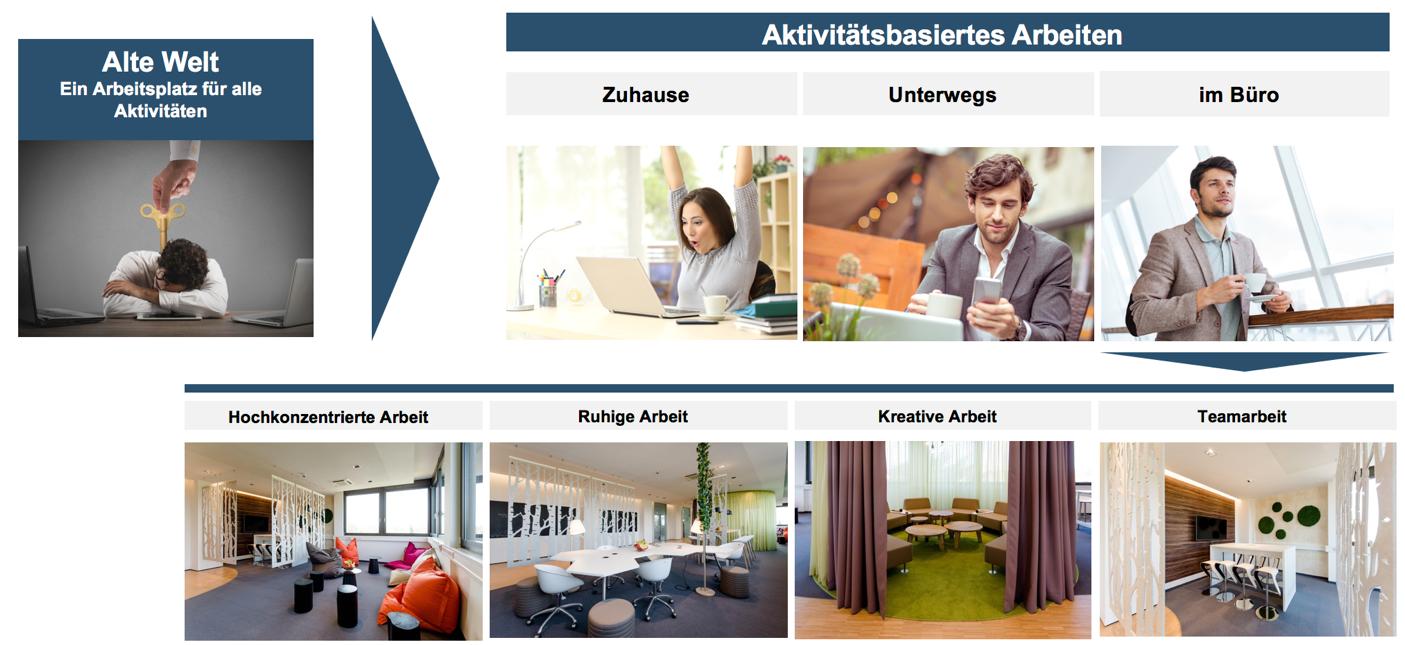“The future is agile: A rapid technological change, a constantly increasing rate of change as well as far-reaching social changes require dynamic robustness, flexibility and liquid structures – in one word: agility. Agility is the survival paradigm of the knowledge society.” ( Mark Wagner With these words, Mark Wagner opens his whitepaper on creative spaces. This topic is just one of the many subtopics of the hashtag: futurework.
Everyone works with!
The trend has been going in one direction for years: A. ll should participate in the company and so far companies have always managed to do better. Driven primarily by digital technologies. When people talked about the “interactive web” in Web 2.0, apps and the Internet of Things made it much more interactive. Now there are numerous other possibilities through, among others, CloudServices. The goal of Futurework is now to adapt the workplace and work to this “hands-on culture”.

Work wherever you want (futurework)
Most of the articles on Twitter on futurework deal with the new workplace design. The articles speak of a result culture instead of a present tense culture. Under the topic: Activity based working, an “ultimate workplace” is defined, which is suitable for any type of work and in which there is a culture of trust and permanent networking. The illustration shows the idea behind the hashtag futurework and activity based working.

Futurework – a collection of office concepts?
Overall, the investigation of the hashtag shows a strong focus on room and office concepts to promote agility in the company. Sure, there is also talk of a cultural change and this is also dealt with in great detail, but mainly office concepts are evaluated. The following sentence sums up the topic very well: “The office is changing into a place of communication and networking. For this purpose, situation-oriented rooms are required that promote creative exchange or project work as well as offer retreats for concentrated and confidential work and optimally support routine activities. ” (Source Detecon ).
Is that agile?
Companies want agile employees. These should deliver high quality work, be creative, flexible and deliverable. I think the thesis that this is an important property in today’s knowledge society, I do not need to go into further. But are these new concepts really a factor in structural change in companies?
I have found many articles about concepts but have not yet found any direct case studies as to whether such a concept has really improved the work. Sure, these concepts in themselves promise really great work, but does every employee really want to work like this? To answer this question, I will conduct a case study with a company that has implemented such a concept and evaluate exactly whether and how this open space has changed the way we work.
[werbung]
Verwendete Quellen anzeigen
Petry, T. (2016). Digital Leadership: Successful leadership in times of the digital economy . Munich: Haufe Verlag.
Detecon: https://www.detecon.com/sites/default/files/Future%20Work@Detecon_Teaser.pdf



